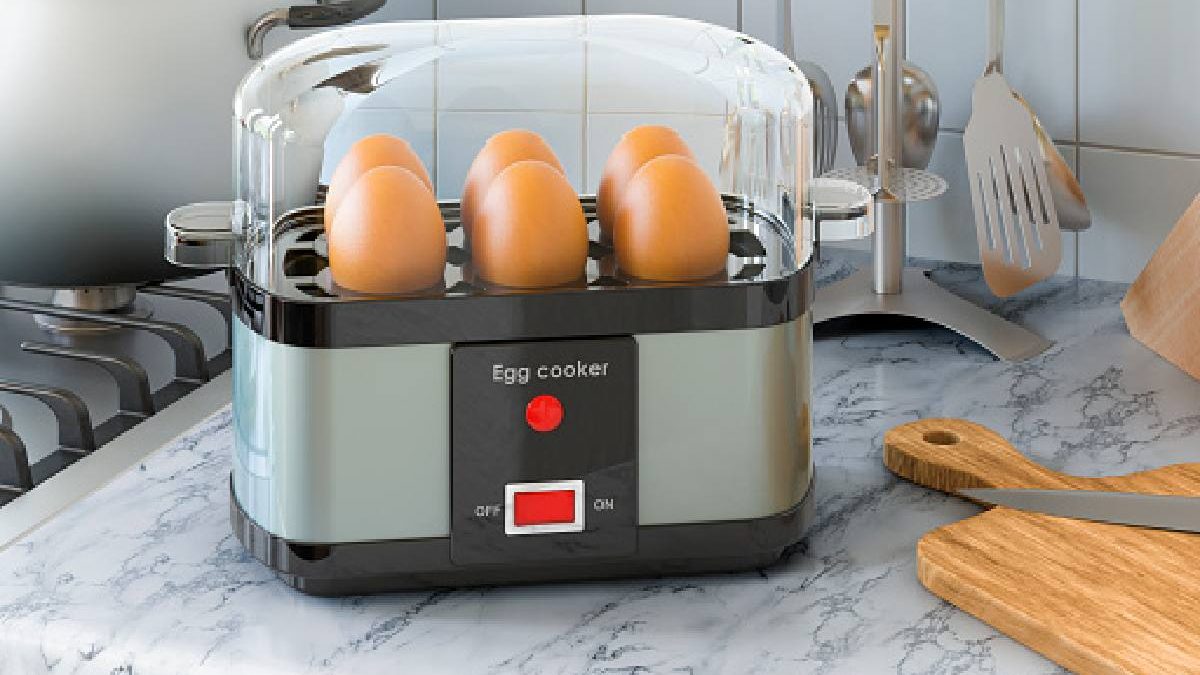Egg Cooker: A few years ago, we decided to have eggs for breakfast every day, and in my quest to make my life easier, I invested just over €10 in an egg cooker. The gossip turned out to be quite an invention; now, we can no longer live without it.
Level of need: “it breaks, and I buy another one right away”.
Yes, you can cook eggs in a saucepan with water, and you don’t need another pot at home, but listen to me first, okay?
Table of Contents
Arguments In Favor
- Eggs are always delicious
- You don’t have to be aware of the minutes you put them on, whether or not the water boils, etc.
- It is small
- It is cheap
- It’s fast
- It is safe
- Less water and less energy use
- You can take it on a trip and cook eggs anywhere, and you need a plug
- It is perfect for making an original and valuable gift
Counterarguments
- There are none 🙂
Also, even if you opt for the traditional saucepan with water method, you always use the same saucepan for the eggs because it looks like a Christ. In other words, you already have a gadget at home exclusively dedicated to boiling eggs, and it is about substituting one for another. Have I already convinced you? Cool.
How does an Egg Cooker Work?
There are several brands, models and prices, but the idea is the same: the eggs steam, and you can choose if you want them rare, medium or very cooked.
The cooker includes a measuring cup with markings divided into three blocks. Each block refers to the cooking level; within each block, there are as many lines as eggs that fit in the cooker.
More water, more cooked eggs. Less water, less cooked eggs.
For Example:
- If you want to cook six well-done eggs, fill the glass with water up to number 6 on the ‘well-done’ block at the top of the glass.
- If you want to cook two eggs rare, fill the glass with water up to number 2 of the ‘rare’ block at the bottom of the glass.
Instructions
- Place the eggs in the slotted pan of the cooker.
- Fill the measuring cup with water, paying attention to the markings. The water level should match the number of eggs you cook and the level of doneness you like.
- Add the water to the base of the cooker, below the eggs.
- Turn on the cooker and wait for the cooking to finish.
- Turn off the cooker and place the eggs in a bowl of cold water. If you want to stop cooking immediately, add ice cubes to the water.
The Skewer
The cooker usually incorporates a skewer to pierce the eggs before cooking them. Supposedly that reduces the chances of the egg cracking or exploding during cooking, but after years of use, I can tell you that it doesn’t matter if you poke it or not; if it has to break, it will fail.
In addition, that skewer is a danger; more than once, we had stuck it inadvertently when taking the tray from the dish drainer, and we removed it with pliers and out.
In my opinion, the eggs break if the shell has taken a hit, even if the egg not apparently broke. It may not even be your fault, and it may have happened at the store.
Broken Eggs During Cooking
That said, if the egg is weak, it will explode, but another trick that helps is not to cook cold eggs from the fridge but wait for them to warm to room temperature before putting them in the cooker, thus avoiding the thermal shock that can make them explode. In summer, they warm up in about 15 minutes; in winter, they will need a little longer.
This is not infallible either; try to see how it goes for you.
CLEANING
With us, it is normal for a kind of brown film to form on the lower tray. To clean it, place a good jet of wine vinegar (the cheapest you can find) on the tray and wait about 30 minutes. Then carefully throw away the vinegar and clean the remains with a cloth or kitchen paper; you will see that they disappear without problems.
You can also put the vinegar in at night and clean it in the morning.

